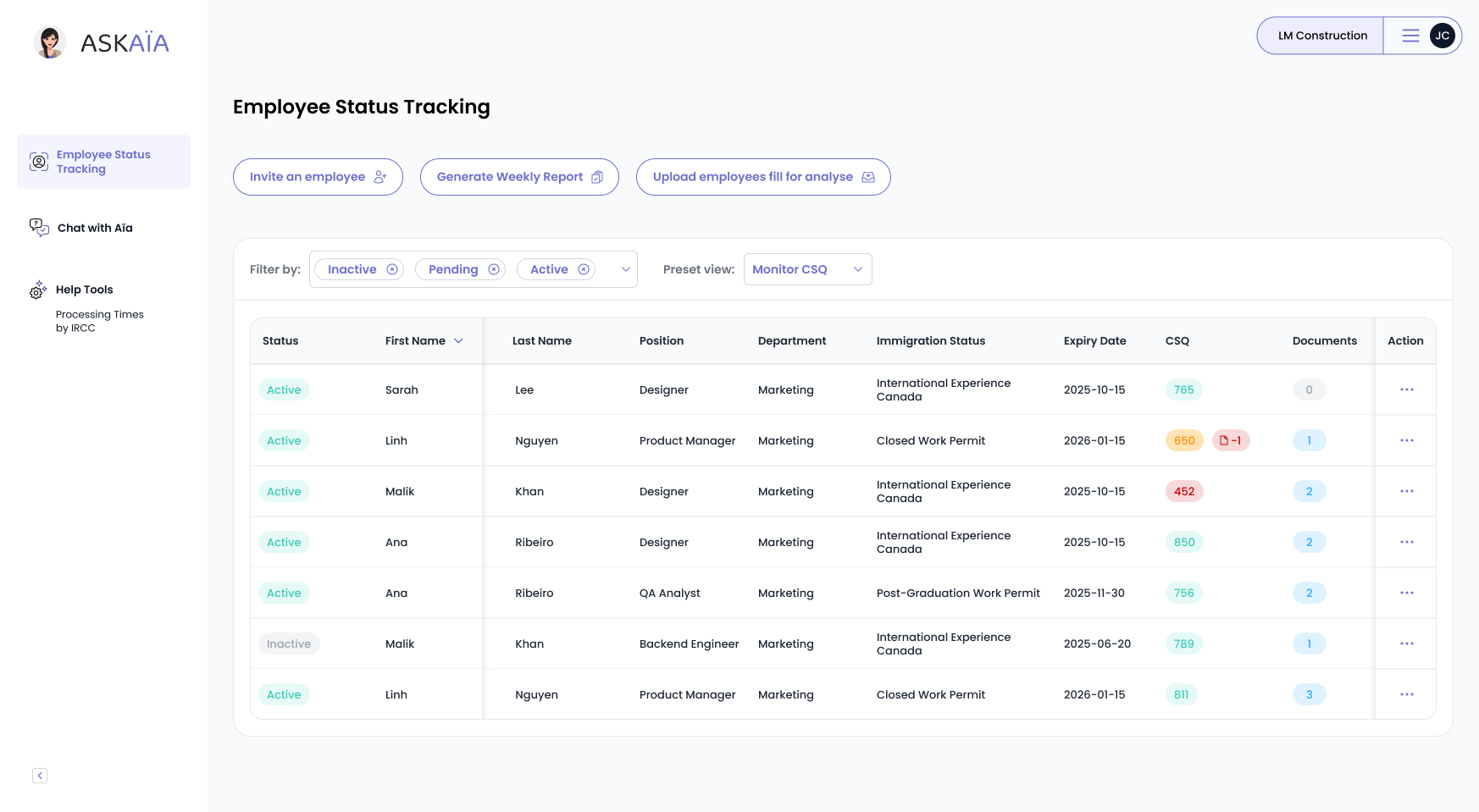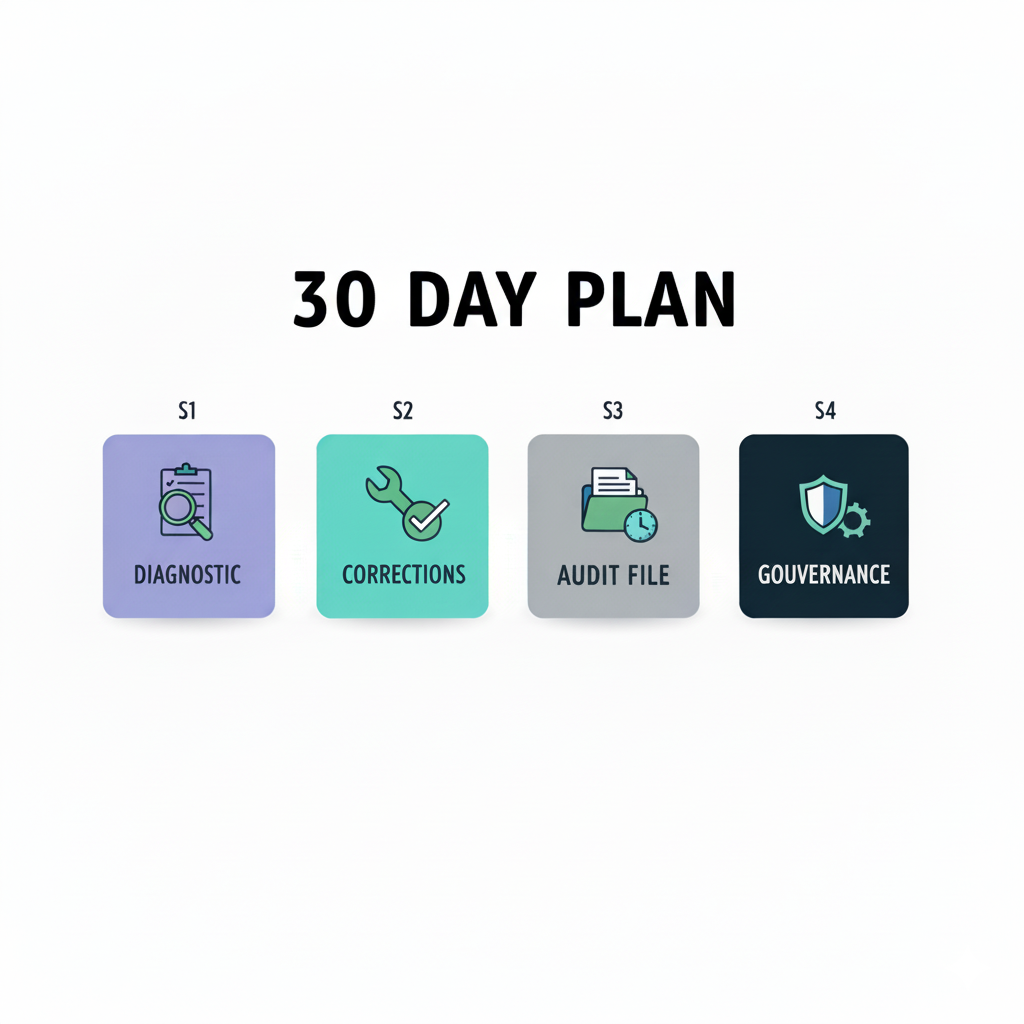Compliance failures don’t look the same in every sector. From trucking fleets to healthcare providers, each industry faces unique vulnerabilities that can lead to steep fines, multi-year suspensions, and permanent damage to your reputation.
This guide explores the most common mistakes, backed by real enforcement cases, and how you can protect your business.
What you will find in this article
Transportation and Trucking
The transportation sector consistently records some of the highest penalties in Canada. Regulators pay close attention to trucking companies because of complex work schedules, cross-border operations, and frequent overtime.
Common Risks:
- Incomplete pay records: Failing to document overtime, trip logs, and rest breaks.
- Misclassification: Listing drivers as independent contractors when they qualify as employees.
- Wage discrepancies: Paying below the prevailing wage rates required by law.
- Failure to cooperate: Ignoring or delaying responses to document requests.
Real Example:
In 2024, a cluster of trucking companies in BC was fined over $2.4 million combined for inconsistent logs and unverified wage records, showing regulators’ willingness to issue maximum penalties for repeated lapses.
How to Prevent It:
- Use electronic logging devices linked to payroll.
- Keep signed contracts clarifying employment status.
- Conduct monthly pay audits.
- Respond to inspector requests within 48 hours.
Construction
Construction companies face heightened compliance risks due to subcontracting layers, rapidly changing job duties, and high turnover.
Common Risks:
- Subcontractor gaps: No agreements confirming LMIA obligations.
- Unverified duties: Assigning tasks beyond the approved NOC code.
- Missing safety and training documentation.
Strategic Insight:
Construction firms that allow layered subcontracting often lose visibility over whether foreign workers are being properly supervised and paid, setting up the “toxic combination” that leads to severe penalties.
Real Example:
An Ontario construction company was suspended from hiring foreign workers for five years after inspectors found incomplete contracts, wage violations, and repeated failure to cooperate.
How to Prevent It:
- Draft subcontractor agreements referencing LMIA compliance.
- Update job descriptions as duties change.
- Store WHMIS and safety training records centrally.
Healthcare
Healthcare providers face additional compliance challenges, especially around licensing and credential verification across provinces.
Common Risks:
- Unverified credentials: No proof of registration or Canadian equivalency.
- Incorrect classification: Labeling aides as nurses to justify higher wages or avoid LMIA renewals.
- Incomplete professional development records.
Privacy Consideration:
Compliance inspections intersect with privacy obligations. Healthcare employers must share records while protecting patient information under provincial health data laws.
Real Example:
An Alberta long-term care facility was fined over $150,000 for failing to produce evidence of staff licensing and professional development, despite multiple reminders.
How to Prevent It:
- Maintain current copies of all credentials.
- Use secure HR systems that respect privacy legislation.
- Train managers on record-keeping requirements.
Technology
Fast-scaling tech companies sometimes underestimate how quickly compliance can unravel.
Common Risks:
- Misclassification: Treating developers as contractors without a legal basis.
- Assumed exemptions: Believing all specialized roles are LMIA-exempt.
- Incomplete contracts: Missing wage details or inconsistent job offers.
Real Example:
A Vancouver SaaS firm received a $100,000 fine after audits revealed contracts lacking clear wage details and roles not supported by LMIA exemptions.
How to Prevent It:
- Confirm exemption eligibility for every position.
- Use standardized employment contracts that detail job duties and compensation.
- Keep proof of job postings and recruitment efforts.
Manufacturing
Manufacturing employers often rely on large seasonal workforces, making consistent record-keeping especially challenging.
Common Risks:
- Unrecorded overtime: Missing or incomplete timesheets.
- Tasks outside approved NOC codes: Workers performing unapproved duties.
- Inadequate training records: Missing documentation for safety and equipment instruction.
Strategic Insight:
Seasonal production peaks often tempt companies to take shortcuts, especially in training records and updating job duties, creating the conditions for repeated violations.
Real Example:
A Quebec manufacturer was suspended from the TFWP after inspectors found employees working outside their NOC codes and receiving unrecorded overtime. These issues persisted for over two years.
How to Prevent It:
- Implement time-tracking systems.
- Keep job descriptions aligned with LMIA approvals.
- Maintain training and certification logs for each employee.
Recidivism and Systemic Failures
Some employers appear repeatedly on Canada’s non-compliance list. The Canadian Brewhouse chain, for example, appeared seven times across related entities, demonstrating that penalties alone don’t always drive compliance. This pattern signals systemic issues: poor internal controls, lack of accountability, and a culture of treating LMIA requirements as optional.
Reputational Risks: Even Iconic Brands Are Vulnerable
Case Highlights:
- Tim Hortons franchisee: Failed to provide records—publicly listed despite the brand’s stature.
- Best Western hotel: Fined for wage discrepancies.
- University of New Brunswick: Penalized for missing documents.
No company is too large or too reputable to avoid scrutiny. In many cases, the reputational damage far exceeds the monetary fine.
How to Reduce Industry-Specific Risks
- Align Contracts and Job Descriptions: Ensure every role matches your LMIA application or exemption criteria.
- Maintain Complete Records: Keep contracts, payroll, recruitment, and training documentation for six years.
- Train HR and Operations Teams: Conduct regular training on compliance requirements.
- Audit Regularly: Review records proactively, especially during busy hiring periods.
- Act Immediately: If you discover gaps, take corrective action and document your steps.
Take Action Today
Concerned about fines or suspensions? Book a free immigration compliance call with the experts on our team.

Let’s get your demo started
Book a demo
You May Also Like
These Related Stories

Non-Compliance Consequences for Canadian Employers
Every year, dozens of Canadian employers face this reality due to non-compliance with the Temporary Foreign Worker Program. In the past year alone, en …

The Hidden Costs of Non-Compliance: Beyond the Fine
Many Canadian employers assume that immigration compliance is only about avoiding fines. But regulatory breaches often lead to severe indirect costs, …

30 days to a stress-free immigration audit
1 in 10 companies is sanctioned for non-compliance in the management of its foreign workers, and the fine can reach $1 million. In this context, being …


